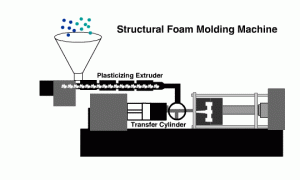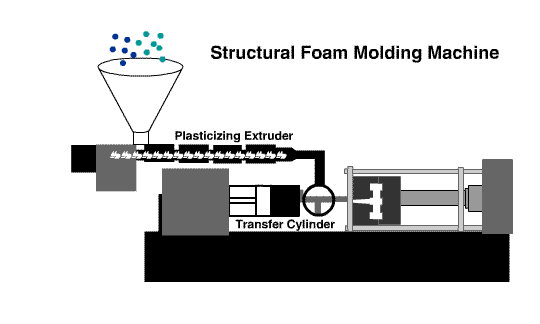
As with most things in this world, scientific progress tends to make our lives easier as time goes on. In the packing and shipping industry, the same holds true. Conventional injection molding was the—well—convention for quite some time. But now, structural foam molding is poised to take over the industry, replacing the older, outdated methods with more cost-effective and product-progressive ends.
Of course, the switch isn’t complete yet as many in the industry still use conventional techniques for many different applications, but when it comes to shipping containers and packaging materials, one thing is certain—the future lies in structural foam molding.
The Structural Foam Molding Process vs. Conventional Injection Molding
Perhaps the best way to explain the difference between the two methods is to describe structural molding and its benefits. Then, as we go along, we can look at how conventional injection molding falls short.
Briefly, structural foam molding is the method used to process thermoplastic resins. This is the low pressure method through which thermoplastics are processed, as opposed to the high pressure method, which is used in conventional molding. In most cases, high density polyethylene (HDPE) resin is used during the structural molding process. The outcome is a rigid part or area with a very hard outer surface. The main thing to take away about the structural foam molding process is the importance of maintaining low pressure throughout. During conventional injection molding, a high pressure is utilized to force the materials into the molding cavity. However, in structural foam molding, the opposite holds true as the part’s configuration is the main component of the process.
The thick wall sections of the part act as channels—or runners—and the foaming action that fills these channels takes place via a chemical reaction inside of the resin blend. Alternatively, an inert and compressed gas can be introduced into the mould. Either way, the result is that the molten resin flows further into the mould with extremely lower pressure, rather than the extreme high pressures used during injection processes. This farther reaching resin is more effective for reaching deeper structures, hence the “structural” moniker of the process.
This means that while structural foam molding creates more solid, durable and lightweight products, conventional molding doesn’t. That’s the key difference.
Why Use Structural Foam Molding and Low Pressure Instead of Conventional Methods and High Pressure?
Generally speaking, there are three reasons why structural foam molding is beating out conventional injection molding in the industry and marketplace. First, structural molding produces a lower yield strength in the end product thanks to the lower pressure inside the mould’s cavity. This means that tools can be manufactured which are lighter and of a softer material than other tool grade steels. This means that aluminum tools can be made from the structural foam moulds. Aluminum can be machined up to three times faster than tool steel meaning increased production with decreased time.
Plus, with that lighter weight, not only can the user of the tool conserve energy as he or she works, but the longer and farther reaching resin flow lengths mean that moulds can be larger in size and weight than they can with conventional injection molding methods. This further speeds up the production process, but also allows for more versatility in the production line. Now, with structural foam molding, you can offer consumers more products, a wider range of products, a better quality product and at a far lower cost.
Finally, the lower cost of the structural foam molding process not only means lower costs for consumers and manufacturers alike, it also means that the market will get more versatile as manufacturers can now afford to make specialty items that were uneconomical before.
How this Fits into Shipping Containers
So, what does this mean for you and your shipping needs? Well, by choosing to go with a company that has embraced the structural foam molding wave of the future, you’ll get the following:
- Better quality shipping containers
- Highly refined and fully customized options
- More options to choose from
- Lower and more competitive prices
- Faster turnaround time
- Better consumer confidence
- Quality, assurance and reliability
Author Bio – This guest article has been written by Patrick Delehanty who works for Creative Techniques, a leading manufacturer of custom pallets, custom shipping containers, shipping and kitting trays etc. If you’re ready to find out what making the switch from conventional injection molding to structural foam molding can mean for your business in terms of increasing profit, productivity and customer satisfaction check out their website today.



